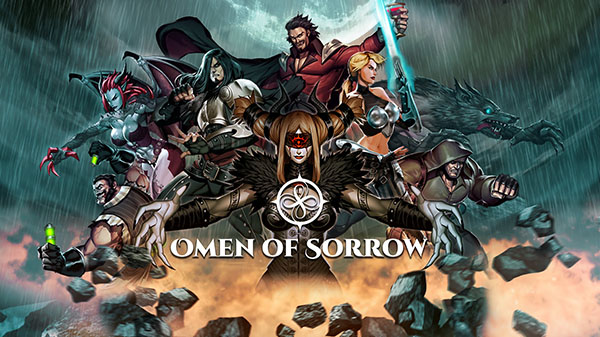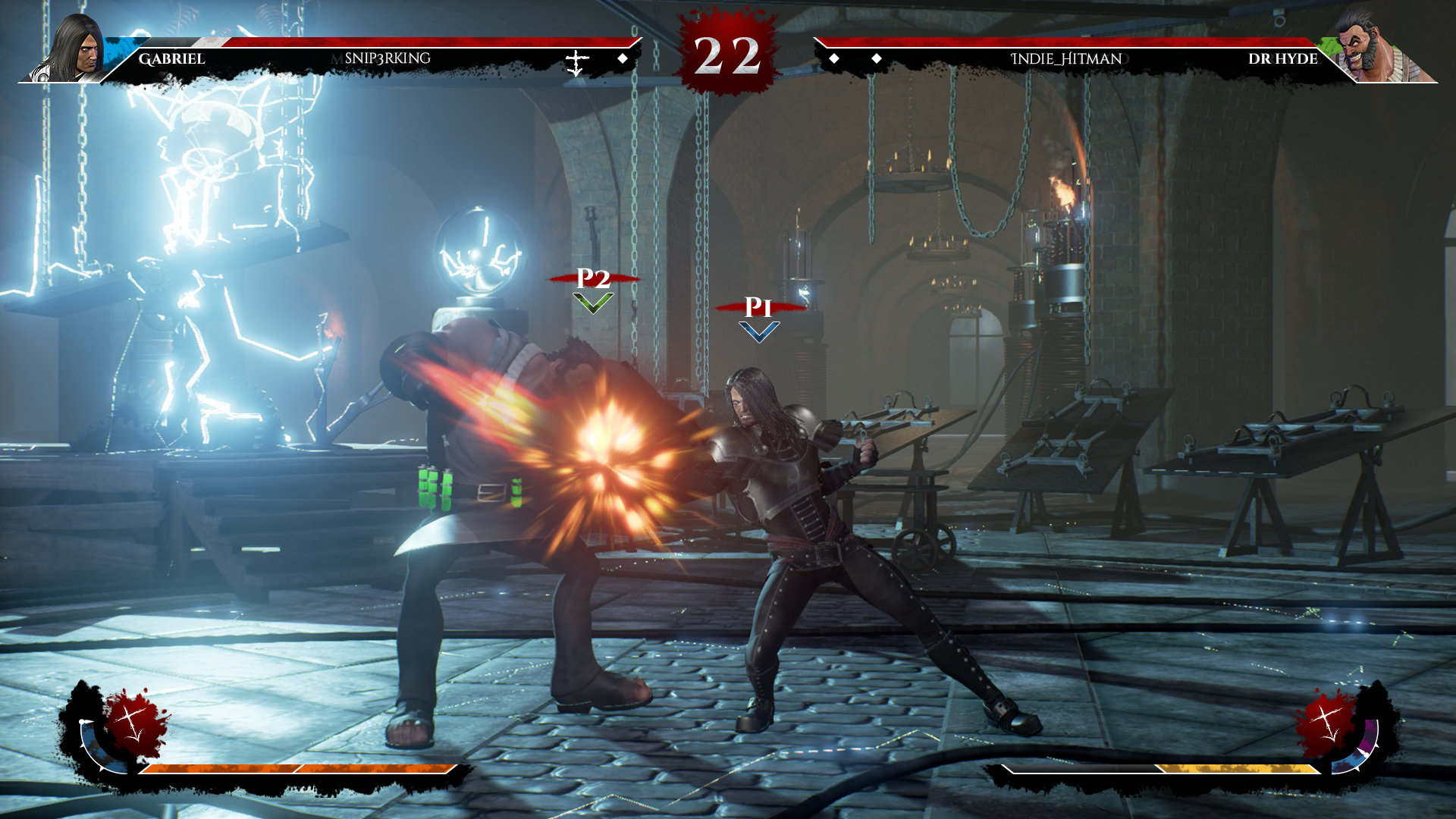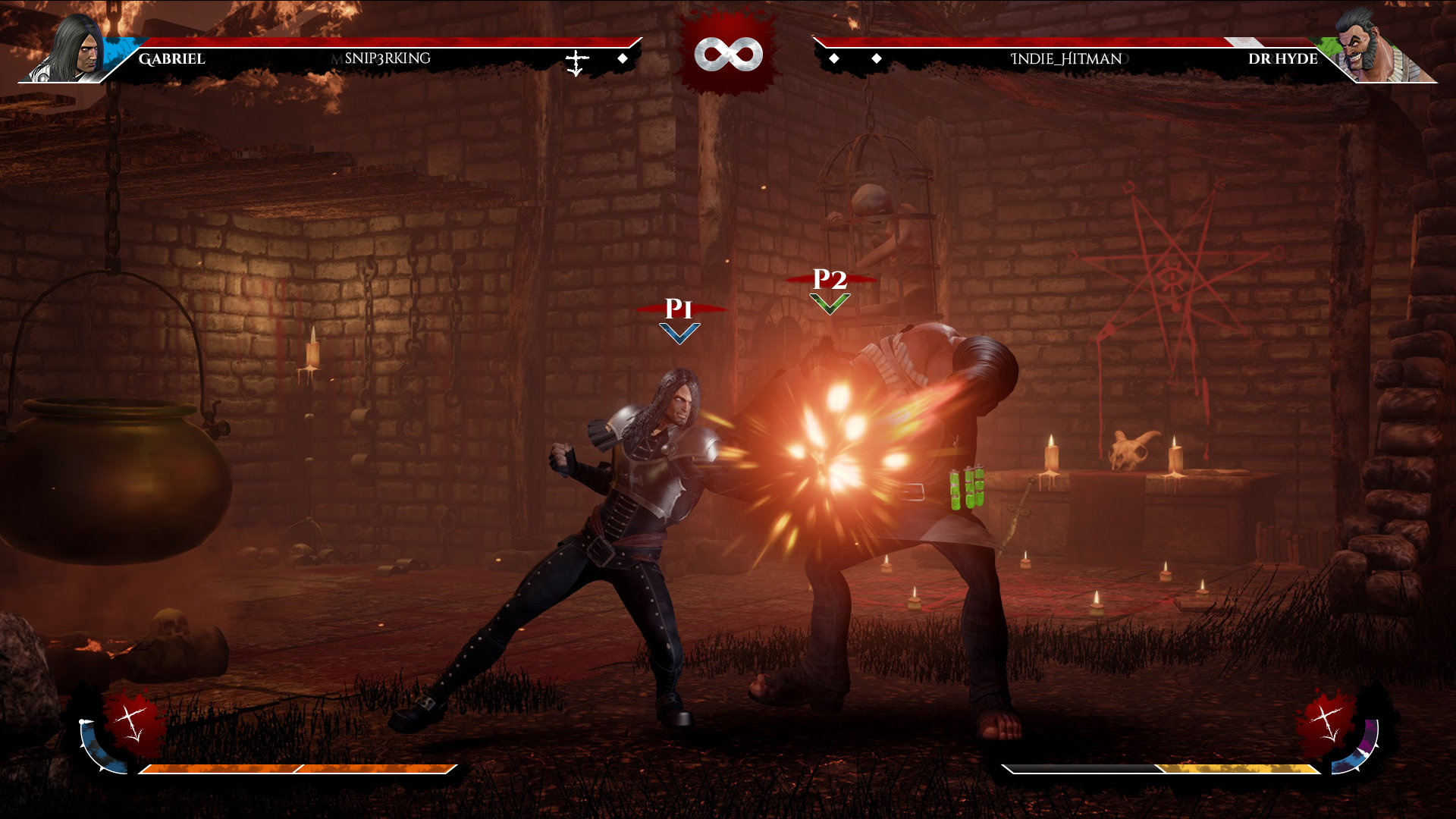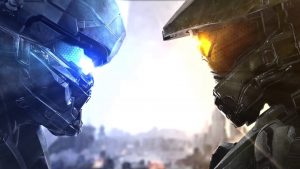
AOne Games’ recently released 2D fighter Omen of Sorrow is a throwback to the old days of the genre, when arcades were dominated by fighters everywhere. From its fighting mechanics to the very philosophies it is built upon, it tries to harken back to those games, while attempting to carve out an identity of its own to use European folklore as inspiration for its setting, world building, and characters. Naturally, we’ve been quite curious about the game, and as such, not too long ago, we sent across a few of our questions to the developers. The following questions were answered by AOne Games’ Sebastian Gana and Felipe Muñoz.
"We’ve always been horror fans, and love the classic monsters from the many interpretations in film and literature and comic books through the years. It’s such a rich tapestry to draw from, and so recognizable and beloved worldwide that we felt it was an obvious fit for a fighting game."
Omen of Sorrow features a very unique tone and aesthetic, drawing from European folklore and mythologies. What inspired you to go in that direction?
We’ve always been horror fans, and love the classic monsters from the many interpretations in film and literature and comic books through the years. It’s such a rich tapestry to draw from, and so recognizable and beloved worldwide that we felt it was an obvious fit for a fighting game. Getting the chance to give them our own twist is, frankly, a treat in itself, too.
Fighters don’t typically focus on narrative aspects much. How does Omen of Sorrow differ from other games in the genre in this regard? What can players expect from the story mode?
We made a big effort to create a mythology around these characters so as to pit them against one another in a way that was meaningful to them, and that also gave us fertile ground to create more stories in the future. It’s an ambitious thing, to worldbuild in a fighting game without the kind of budget other games have, but we wanted to tell our own stories, and make these characters our own. We wanted to make a story mode where you could tell that these characters were living in a world that was real to them, even if not all the details or all the stories in it have been told to the player–yet!
What prompted you to make a fighter that was decidedly inspired by the arcade, classic days of the genre?
I remember with a lot of nostalgia how, back in the 90’s, going to the Arcades was the only fun thing to do in the little town my family would take me on vacations every year. So, every year, for two months I would do nothing but go to the Arcades. Street Fighter 2 was the most popular game back then, and everybody was playing it. I wasn’t as good as some other players, but I had such a great time just watching. I remember how when Mortal Kombat came out it blew my mind, too. I was never any good, but I still loved to just watch and analyze other players playstyles. I loved secret characters being a thing, and how in Mortal Kombat just getting to fight Reptile was a reward in itself. In Omen of Sorrow we wanted to bring some of that old-schooly feel to the current generation of fighting games, and so we have two characters who have to be unlocked–but you have to do it on your own. In terms of mechanics, Felipe Muñoz was responsible for designing the mechanics and the way characters fight, as well as updating the old-school ideas we had for the game into a more modern kind of fighting game. That’s how we ended up with a very western-looking fighting game that nonetheless feels very Japanese in terms of mechanics.
"We wanted to make a fast paced fighting game that in some ways felt like a callback to older fighting games."
Can you tell us about the unique abilities and fighting styles of the different character types?
We wanted to make a fast paced fighting game that in some ways felt like a callback to older fighting games. With this in mind, we designed a fast paced, grounded game, but made sure to give every character a more flavorful interpretation than older games used to be able to. So, many of our different fighters have very distinctive playstyles, even if the core mechanics of the game are more old-schooly and less flashy. We have characters like Vladislav III who, armed with many teleports and a strong chain combo, has very good runaway capacity and nonetheless explosive damage, or Radegonda, who is very clunky on the ground and must sacrifice a lot of her stronger options if she wants to be able to take the initiative at any given time, but who becomes incredibly versatile and mobile while in the air. There’s also characters like Imhotep, with strong ranged options and the ability to setup big damage, but not any good options to run away. Cool character design is one of the ways in which we wanted to make the game feel more unique and new, as a way to balance out all the classic callbacks present in other aspects of design.
How important is stage design in classic fighters- more specifically, how important is it in Omen of Sorrow? Can you talk to us a bit about the process of developing those and what went on behind the scenes in terms of decisions regarding design?
Stage design, usually, is not that big a deal in fighting games. Generally speaking, the stages are just a background for the fights to take place. However, in Omen of Sorrow, we had so many cool things to cite, so many iconic locations to make use of, that we put special attention to the stages. As far as the process of developing them, I don’t know if there’s that much to say! We really wanted to callback some of the most iconic imagery of the classic monsters. Locations like Dr. Frankenstein’s Lab or the burning windmill or Count Dracula’s Castle are all so cool that we would have felt in debt if we hadn’t used them. Other than that, we also made sure to hide easter eggs of all kinds in the stages, just because we could. We really wanted to make the game look cool in every sense, and so we spared no expense into making the stages look as cool as we could manage. It was as much a labor of love as any other aspect of the game.
Impressions on the game have been pretty good, but a few people have mentioned that the game seems to be a bit lacking in content. How do you plan on tackling these complaints?
To this date we’ve released several patches, specifically to address the biggest complaints we’ve heard and the worst problems we’ve been having, such as the loading times. We’re planning to address every big problem we’ve heard from the community; for instance, we’re about to launch a big update that should fix many issues with the AI, so it’s more challenging than the one we have now.
"Before we can confirm or deny any rumors about a Switch version, the logical step to take would be to try and see if the game runs correctly on that platform."
Do you have any plans to launch on Switch?
Before we can confirm or deny any rumors about a Switch version, the logical step to take would be to try and see if the game runs correctly on that platform. For that, we would need Nintendo devkits to arrive to Chile in order to run such tests and make sure the gameplay is as fluid as we need it to be. If those tests go well, then we could maybe share some good news.
Does the game will feature PS4 Pro specific enhancements? What can players expect if they are playing the game on PS4 Pro? Is 4K/60fps on the cards?
If I’m not mistaken, today there’s no fighting game with 3D graphics that runs at native 4k/60fps in PS4 Pro and that, I imagine, is due to the fact that fighting games have to be very stringent about their framerate. During development, we did test a 4k native resolution and it slowed the game down considerably. We chose to put gameplay first.
What I don’t discard, however, is HDR, which we still have to properly research. It could help Omen of Sorrow’s visuals a ton.
And how does the base PS4 version turn out in terms of resolution and frame rate?
In the regular PS4, the game will keep functioning as it’s supposed to, at 60fps, which is the standard for this kind of fighting game. In terms of resolution, it will keep running at 1080p.
Next gen is coming sooner or later. From a development perspective, what is your biggest expectation from PS5 and Xbox Scarlett?
Every new console generation means a hardware update, which is great for making things look better. For the same reason, it rises production costs; since reaching a higher visual standard becomes more and more complex (more resources and more manpower). In any case, there’s many games that shine strictly for their gameplay, and have no need for better hardware to be masterpieces (such as Braid). To be entirely honest, it’s hard for me to imagine what kind of novelty the next generation of consoles may bring other than better hardware. Things like VR don’t seem like the right path to me as it’s isolating and not very conducive to social dynamics, which is a very important aspect of gaming–not to mention it can be pretty uncomfortable. I think some sort of innovation in the social aspects of gaming is the proper way forward for future generations.
"Nowadays, the matchmaking services of Playstation, Xbox, Steam, etc. are a tool for developers not to spend too much time developing their own server technologies. However, this splits the userbase. Anybody would want to be able to play and match with players in any platform. This is something we’ve believed since the beginning, which is why, other than building Omen of Sorrow, we created our own server and matchmaking technology we call “Game Weaver” in order to accept Cross-Play."
Do you think cross platform will be one of the defining features of next-gen consoles?
I think it could happen even before the next generation comes along. Epic Games is opening the doors for that to happen with Fortnite in Playstation. Today, the barriers are mostly political-commercial. Nowadays, the matchmaking services of Playstation, Xbox, Steam, etc. are a tool for developers not to spend too much time developing their own server technologies. However, this splits the userbase. Anybody would want to be able to play and match with players in any platform. This is something we’ve believed since the beginning, which is why, other than building Omen of Sorrow, we created our own server and matchmaking technology we call “Game Weaver” in order to accept Cross-Play. We hope to keep working on it and perfecting it in time, validating it with users, as well as maybe experiment a bit with new mechanics online and Omen of Sorrow.


















